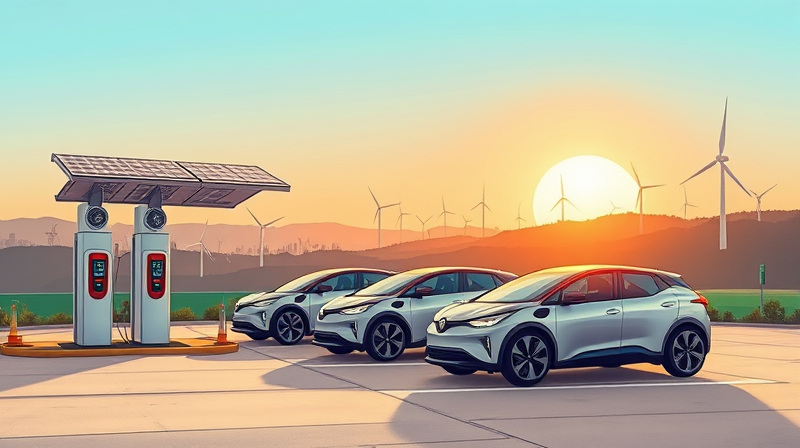The rapid shift toward sustainable transportation is not just a trend—it’s a profound market transformation. Investors keen on capitalizing on this change must understand the dynamics, risks, and opportunities that define the EV landscape today.
Market Performance at a Glance
The first quarter of 2025 showcased remarkable momentum. In the U.S., there were nearly 300,000 new EVs sold, marking an 11.4% year-over-year increase and accounting for 7.5% of total new vehicle sales. Globally, sales reached 4.1 million units in Q1, a robust 29% jump compared to the same period last year. March alone saw 1.7 million EVs delivered, underlining the sector’s resilience and upward trajectory.
However, growth varies by region, reflecting local policies, infrastructure readiness, and consumer preferences. A closer look at the breakout performance reveals where the biggest surges are occurring.
Leaders Driving the Charge
Tesla continues to dominate with a 43.4% U.S. market share, even as its year-over-year sales dipped 9%. Legacy automakers are catching up: General Motors has more than doubled its EV sales since Q1 2024, overtaking both Ford and Hyundai Group. Honda and Acura, newcomers to electrification, introduced over 14,000 units in Q1, up from zero a year ago.
Top-selling models blend performance with practicality. The Tesla Model Y and Model 3 retain their crowns, while the Ford Mustang Mach-E, F-150 Lightning, Hyundai Ioniq5, and emerging entries like the Tesla Cybertruck and Rivian R1S are carving out significant niches.
Market Valuation and Growth Projections
Industry analysts valued the global vehicle electrification sector at $91.6 billion in 2024. This figure is expected to reach $205 billion by 2034, driven by sustained consumer demand and supportive regulations. Meanwhile, the U.S. electric commercial vehicle market reached $13.88 billion in 2023 and is on track to expand at a 26.4% CAGR, hitting $55.92 billion by 2029.
According to J.D. Power, EV retail share should stabilize around 9.1% for the full year 2025, mirroring 2024’s momentum. As production costs decline and model ranges broaden, the industry is shifting from premium offerings to more affordable mass-market vehicles—an evolution that could unlock new consumer segments.
Investment Vehicles for EV Exposure
Investors can gain targeted EV market exposure through various instruments:
- Direct shareholding in pure-play automakers and battery suppliers
- Specialty ETFs such as Global X Autonomous & Electric Vehicles (DRIV) and iShares Self-Driving EV and Tech (IDRV)
- Mini share baskets focusing on multiple EV-related companies
Choice of vehicle depends on risk tolerance, desired diversification, and conviction about specific segments. Component manufacturers and raw material suppliers (lithium, nickel) also represent critical links in the value chain.
Trends, Challenges, and Future Outlook
The EV revolution is not without its complexities. Growth is exhibiting non-uniform growth dynamics across regions, with China outpacing all other markets. Meanwhile, established products sometimes see a sales dip as consumers hold out for newer models.
Key headwinds include:
- uncertainty about future incentives, as policy frameworks evolve
- Infrastructure gaps, particularly in fast-charging networks
- Supply chain vulnerabilities amidst potential tariffs
- Removal of subsidies in certain countries leading to temporary sales declines
Despite these challenges, the future remains promising. Analysts label 2025 a potential “reset year,” with growth rates smoothing out rather than slowing. Key drivers to watch include:
- commercial fleet electrification represents major potential in last-mile delivery and logistics
- Further cost parity between EVs and internal combustion vehicles
- Expansion of charging infrastructure through public-private partnerships
- Broader availability of entry-level models to capture mass-market adoption
For investors, the EV market offers a blend of innovation and impact. By understanding regional variations, tracking policy developments, and selecting the right investment vehicles, one can position portfolios to benefit from the electrified future of mobility.
References
- https://www.coxautoinc.com/market-insights/q1-2025-ev-sales/
- https://www.evdesignandmanufacturing.com/news/state-electric-vehicle-industry-2025-beyond/
- https://ev-volumes.com
- https://www.coxautoinc.com/market-insights/ev-market-monitor-january-2025/
- https://rhomotion.com/news/global-ev-sales-up-29-in-2025-from-previous-year/
- https://caredge.com/guides/electric-vehicle-market-share-and-sales
- https://capex.com/en/academy/investing-in-ev-stocks
- https://www.jdpower.com/business/resources/e-vision-intelligence-report-january-2025










